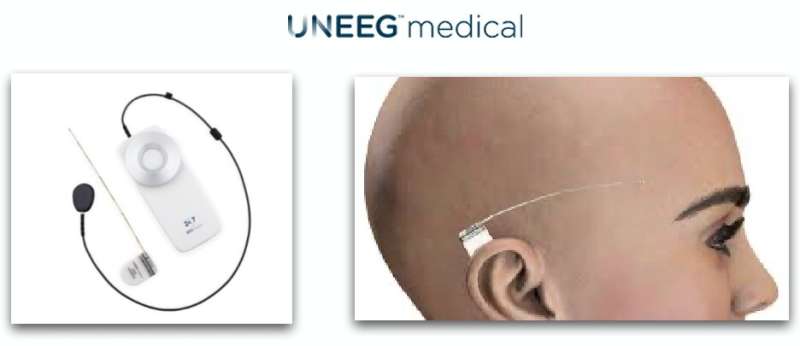Quicker diagnosis and treatment of people suffering from epilepsy thanks to computers

With the help of the EEG, doctors analyze what is happening in patients' brains. Valuable information, but unfortunately, also a time-consuming process and not always possible at the moment you want to perform a measurement. According to Michel van Putten, neurologist at the Medisch Spectrum Twente hospital and professor of clinical neurophysiology at the University of Twente, technology has made it possible to measure more efficiently and make diagnoses faster and more reliably.
Michel van Putten carries out a large part of his research at the interface between technology and care. "I take the experiences that I gain within the MST with me to the department at the university. Here we investigate, among other things, how we can reduce brain damage due to cardiac arrest and how we can diagnose and treat patients with possible epilepsy in a better and more reliable way."
Preventing permanent brain damage?
A current example: in July 2017, Ajax football player Nouri Abdelhak lost consciousness during a match. Not much later it became known that a cardiac arrhythmia was the cause and that he suffered serious and permanent brain damage. Much research is being done in this area. When do the brains become permanently damaged and how can this be determined? Can we perhaps limit the damage? Michel: "As soon as a patient is in intensive care with us, brain activity is continuously measured with the EEG. This is very informative, but the assessment can take considerable time and a specialist is not always present at the right time. We have recently shown that AI can assess the EEG just as good as the human expert. We will soon be implementing this in the MST. This will enable us to inform family members and intensivists more quickly."
Measuring with a new electrode
EEGs are also used with patients with possible epilepsy. Epilepsy is sometimes difficult to treat with medication. "In the MST, neuromodulation is also used with patients suffering from epilepsy: the brain is directly or indirectly electrically stimulated. Unfortunately, this method does not work with all patients; ideally we want to be able to predict reliably who will really benefit from an operation. We believe that long-term EEG measurements can give us this information."
The Danish company UNEEG Medical has developed a very small electrode with which brain activity can be measured for months. Together with the neurosurgeons, a proposal is being developed to use this measurement technique in the MST. Michel: "The electrode is inserted just below the scalp, above the ear. This allows us to make long-term measurements of the brain activity. We want to apply this first and investigate patients suffering from epilepsy who are eligible for surgery. In this way we hope to find biomarkers that predict which patients will or will not respond to neurostimulation; we also expect that we will be able to better set the neurostimulator."
New 'gold standard'
Both examples show that the EEG provides valuable information, but that analysis can be time-consuming. "Our research shows that EEGs can be reliably analyzed by computers in the near future. This not only saves time and money, but also allows doctors to start the right treatment quicker and patients know more quickly where they stand. The gold standard that EEGs should always be analyzed by people will no longer be there in ten years' time. Thanks to technology, we can diagnose more quickly and reliably and treat patients better."



















